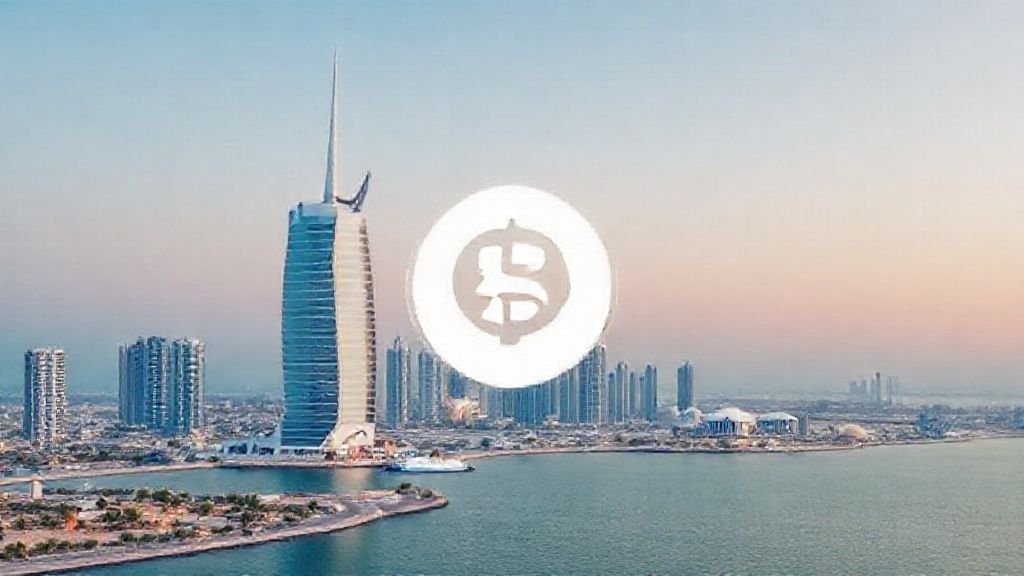Blog
A Complete Guide to Free Zones in Dubai

Dubai, renowned for its impressive skyline and vibrant economy, has emerged as a top destination for entrepreneurs and businesses seeking to establish a presence in the Middle East. One of the key attractions for business owners is Dubai’s array of Free Zones. These zones offer a unique set of benefits and opportunities that can significantly impact your business setup and growth. In this comprehensive guide, we will explore the ins and outs of Free Zones in Dubai, providing you with valuable insights and tips for leveraging these zones effectively.
1. What Are Free Zones in Dubai? A Comprehensive Overview
Understanding Free Zones: Free Zones in Dubai are designated areas where businesses can operate with specific benefits and incentives. These zones are designed to attract foreign investment and encourage economic growth by providing favorable conditions for business operations. They offer a range of advantages, including tax exemptions, full foreign ownership, and streamlined company registration processes.
The Evolution of Free Zones: Over the years, Dubai has established numerous Free Zones catering to various industries, from technology to media to logistics. Each Free Zone has its own regulations and incentives, tailored to meet the needs of specific business sectors. This diversity allows entrepreneurs to choose a zone that aligns with their business goals and operational requirements.
2. The Benefits of Setting Up Business in a Free Zone
Tax Advantages and Exemptions: One of the primary attractions of Free Zones is the significant tax benefits they offer. Companies operating within these zones often enjoy 100% tax exemptions on corporate income and import/export duties. This can lead to substantial cost savings and improve your business’s profitability.
Full Ownership and Control: Unlike other business structures in Dubai, Free Zones allow for 100% foreign ownership of your company. This means you can retain complete control over your business without the need for a local partner or sponsor. This level of ownership can be crucial for maintaining strategic decision-making and operational flexibility.
Required Documentation and Steps: The registration process generally involves submitting a range of documents, including a business plan, passport copies of the shareholders, and proof of address. The FZA will review these documents and, once approved, issue the necessary licenses and permits for your business operations.
4. Key Free Zones in Dubai: Choosing the Right One for Your Business
Dubai Multi Commodities Centre (DMCC): Known for its robust infrastructure and strategic location, DMCC is a leading Free Zone that caters to a wide range of industries, including commodities, finance, and technology. It offers comprehensive facilities and services to support business growth and development.
Dubai Internet City (DIC): DIC is a Free Zone focused on the technology and IT sectors. It provides state-of-the-art infrastructure and a supportive environment for tech companies and startups. With its emphasis on innovation, DIC is an ideal choice for businesses in the digital and technology sectors.
Budgeting for Success: While setting up a business in a Free Zone can be cost-effective, it is essential to budget appropriately to cover all expenses. Conducting thorough research and consulting with local experts can help you estimate your business setup cost in Dubai accurately and avoid unexpected expenses.
Affordable Free Zones: For entrepreneurs seeking low-cost business setup options, some Free Zones offer budget-friendly packages and incentives. These packages may include reduced registration fees, discounted office space, and other cost-saving measures.
Maximizing Savings: To take advantage of low-cost business setup opportunities, consider exploring Free Zones that offer special promotions or incentives for new businesses. Additionally, working with a local business setup consultant can help you identify the most cost-effective options and streamline the setup process.
7. Compliance and Regulations: What You Need to Know
Adhering to Local Laws: Operating a business in a Free Zone requires adherence to local laws and regulations. This includes complying with the Free Zone’s specific rules and guidelines, as well as broader legal requirements related to business operations in Dubai.
Ongoing Compliance: It is crucial to stay informed about any changes in regulations and ensure your business remains compliant. Regular audits and reviews can help you avoid legal issues and maintain a smooth operation within the Free Zone.
Exploring Opportunities: While Free Zones offer many benefits, there may come a time when your business needs to expand beyond the zone’s boundaries. This could involve setting up additional offices, entering new markets, or establishing a presence outside the Free Zone.
Strategic Planning: To successfully navigate expansion, develop a strategic plan that outlines your objectives, target markets, and operational needs. Collaborating with local experts can provide valuable insights and help you make informed decisions.
9. Success Stories: Inspiring Examples of Free Zone Businesses
Case Studies of Successful Ventures: Many businesses have thrived in Dubai’s Free Zones, leveraging the unique benefits and opportunities available. Examining these success stories can provide valuable lessons and inspiration for your own business journey.
Learning from Others: By studying how other companies have successfully navigated the Free Zone environment, you can gain insights into best practices, potential challenges, and effective strategies for achieving your business goals.
GCS Group in Dubai: Your Complete Guide to Free Zones and Business Setup Services
At GCS Group, we are dedicated to simplifying your journey to establishing a successful business in Dubai. Our comprehensive services encompass business setup in Dubai, company registration in Dubai, and company formation in Dubai, ensuring you receive expert guidance at every step. Dubai’s Free Zones offer unique advantages for entrepreneurs and businesses looking to capitalize on tax benefits, 100% foreign ownership, and streamlined regulatory processes. Navigating these Free Zones can be complex, but with our expertise, we make it seamless. Our team assists you in understanding the various Free Zones available, each tailored to different industries, from technology to logistics, enabling you to select the one that best aligns with your business goals. We also provide detailed insights into the business setup cost in Dubai, helping you budget effectively and avoid unexpected expenses. By leveraging our low-cost business setup options, you can maximize your investment and start your venture with confidence. From securing the perfect Free Zone location to completing all necessary documentation, GCS Group ensures a hassle-free setup process. Our commitment is to offer not only cost-effective solutions but also strategic advice to position your business for long-term success in Dubai’s dynamic market. With GCS Group, you’re not just setting up a company; you’re gaining a partner in your growth journey. Let us guide you through every aspect of setting up in Dubai’s Free Zones, so you can focus on what matters most—building and growing your business.
Blog
Looking for a GCS Crypto Currency Licence and Registration in Dubai?

Looking for a GCS Crypto Currency Licence and Registration in Dubai?
Welcome to our guide on Crypto currency license in Dubai. At GCS, we specialize in providing top-quality Crypto currency license services to meet your needs.
Why Choose Our Crypto currency license Services?
Our team of experienced professionals understands the importance of quality Crypto currency license in Dubai. We pride ourselves on delivering exceptional results and customer satisfaction.
Our Approach to Crypto currency license
We take a comprehensive approach to Crypto currency license, ensuring that every aspect of our service meets the highest standards. Our process includes:
- Thorough consultation to understand your specific needs
- Customized solutions tailored to your situation
- Ongoing support throughout the process
- Transparent communication at every step
Important Resources
For more information about Crypto currency license, check out these valuable resources:
- Crypto Currency Licence in Dubai
- Dubai Crypto Currency Licence
- Crypto Currency Registration in Dubai
- Dubai Crypto Currency Registration
- GCS Crypto Currency Licence in Dubai
Get Started Today
Ready to experience the difference our Crypto currency license services can make? Contact GCS today to schedule your consultation. Our team is standing by to answer your questions and help you get started on the path to success.
Don’t wait – reach out to us today and discover why so many people in Dubai trust GCS for their Crypto currency license needs.
Blog
Best Crypto currency license Services in Dubai

Best Crypto currency license Services in Dubai
Welcome to our guide on Crypto currency license in Dubai. At GCS, we specialize in providing top-quality Crypto currency license services to meet your needs.
Why Choose Our Crypto currency license Services?
Our team of experienced professionals understands the importance of quality Crypto currency license in Dubai. We pride ourselves on delivering exceptional results and customer satisfaction.
Our Approach to Crypto currency license
We take a comprehensive approach to Crypto currency license, ensuring that every aspect of our service meets the highest standards. Our process includes:
- Thorough consultation to understand your specific needs
- Customized solutions tailored to your situation
- Ongoing support throughout the process
- Transparent communication at every step
Important Resources
For more information about Crypto currency license, check out these valuable resources:
- Crypto Currency Licence in Dubai
- Dubai Crypto Currency Licence
- Crypto Currency Registration in Dubai
- Dubai Crypto Currency Registration
- GCS Crypto Currency Licence in Dubai
Get Started Today
Ready to experience the difference our Crypto currency license services can make? Contact GCS today to schedule your consultation. Our team is standing by to answer your questions and help you get started on the path to success.
Don’t wait – reach out to us today and discover why so many people in Dubai trust GCS for their Crypto currency license needs.
Blog
Dubai 2025: The Tech Revolution Unveiled – From Smart Cities to AI‑Driven Innovation
Dubai has always been a city that looks toward the future. From its iconic skyline to its ambitious plans for sustainability, the spirit of innovation is woven into every project. In 2025, the city is stepping into a new era where technology is not just a tool but a living system that powers everyday life, reshaping how residents work, travel, shop and connect.
1. The Birth of a Smart City
When most people think of a smart city, images of connected traffic lights, billboards that update in real time, and drones delivering packages come to mind. Dubai’s journey began with the Smart Dubai programme, which set out to create a city where digital services are delivered more efficiently and transparently. The programme’s core goals were:
- Digital identity for citizens and residents.
- Integrated data platform for city services.
- Smart infrastructure that adapts to real‑time needs.
- Encouragement of start‑ups and tech investment.
These pillars laid the groundwork for a city that can react to the needs of its people instantly, making daily life smoother and more rewarding. This foundation also helped launch a wave of projects that pushed Dubai ahead of the global curve.
2. Artificial Intelligence Takes the Driver’s Seat
Artificial Intelligence (AI) has become the engine behind many of Dubai’s newest achievements. From predictive policing that helps keep streets safe to AI‑powered logistics that reduce delivery times, the technology is changing every sector.
Transportation and Mobility
The Dubai Metro’s robots now run maintenance checks without human intervention. Autonomous buses navigate the sidewalks, delivering passengers between business districts with minimal delays.
Healthcare Revolution
AI algorithms predict potential health risks based on lifestyle and genetic data, allowing doctors to intervene early. Virtual consultations powered by AI chatbots provide instant medical advice, freeing up specialists for complex cases.
Public Safety and Law Enforcement
Machine‑learning models detect unusual crowd movements and highlight potential security threats before they grow. Law‑enforcement drones patrol the city, ensuring that emergency response is swift and efficient.
By embedding AI into everyday services, Dubai turns its metropolis into a responsive organism that learns and grows with its people.
3. Blockchain: The Invisible Ledger of Modern Life
While blockchain has made headlines in finance, its real power lies in its transparency and security. Dubai has leveraged the technology to create tamper‑proof systems across government, healthcare, and logistics.
One notable example is the Digital Health Pass—an immutable record that tracks vaccination, medical history, and health alerts. Similarly, property transactions are recorded on a blockchain, cutting down paperwork and fraud while speeding up closing times.
These applications not only add value for the government but also provide a sense of trust for residents and investors alike.
4. The Architecture of Tomorrow: Smart Skyscrapers and Infrastructure
Dubai’s skyline is home to more than just office space; it is a living laboratory for sustainable design. Buildings now incorporate:
- Energy Harvesting Windows: Transparent solar panels that provide electricity to the building’s systems.
- Responsive Facades: Skin that adjusts to sunlight and temperature, keeping interiors comfortable while lowering energy usage.
- Water Recycling Systems: On‑site purification that reduces municipal water demand.
These features not only reduce carbon footprints but also lower operational costs, making high‑rise living accessible to a wider audience.
5. Technology Hubs and the Start‑up Ecosystem
The city’s growth is driven partly by its vibrant ecosystem for technology start‑ups. Numerous incubators provide mentorship, financing, and access to venture capital. Key areas of focus include:
- FinTech solutions simplifying banking for the cloud‑native generation.
- EdTech platforms that bring personalized learning to anyone on the move.
- HealthTech that integrates wearable data with AI diagnostics.
- Supply chain technology creating end‑to‑end traceability.
Dubai’s open data initiatives give start‑ups a wealth of information—making it easier to test and scale products that fit the local market and can also export worldwide.
6. The Human Touch: Building Tech Culture
Innovation is only as good as the people behind it. Dubai invests heavily in human capital: from schools teaching coding from kindergarten to higher‑education programmes that put AI and blockchain at the forefront.
Workshops lead residents to create their own mini‑projects, giving them a sense of ownership over the urban digital narrative. These efforts foster a public appetite for technology, ensuring that the next wave of ideas will come from diverse voices.
7. Looking Ahead: What Lies Beyond 2025?
The ambition never stops. While 2025 has delivered massive strides, the sights are now set on a more interconnected yet sustainable system.
- Zero‑carbon buildings enabled by nanomaterials.
- Hyper‑fast transport links into the desert, turning islands into bustling hubs.
- Advanced AI that helps residents live healthier lifestyles by predicting needs.
- Fully autonomous commercial districts where order and efficiency thrive.
These future projects are based on data collected in real time, meaning the city can adapt quickly to changing aspirations.
Dubai’s transformation demonstrates how creating a digital ecosystem, backed by supportive policy, can accelerate progress for all residents and set a global example for future city planning.
Want to read more about how Dubai is turning skyscrapers into AI hubs? Explore our story on skyscraper AI transformation.
Curious how the city’s smart system uses AI and blockchain to improve everyday life? Dive into the pulse of Dubai’s tech evolution.
Still wondering how visionary dreams turned into a reality of smart cities and AI? Discover the journey of Dubai’s tech pulse.
-

 Business2 years ago
Business2 years agoTop 10 Highest-Paying Jobs in Dubai for 2024-25
-

 Business2 years ago
Business2 years agoTop 10 Business Opportunities in Dubai for 2024-2025
-

 Business2 years ago
Business2 years agoBest upcoming exhibitions and trade shows in Dubai, 2024
-

 Business1 year ago
Business1 year agoHow Much Does It Cost to Open a Company in Dubai in 2024?
-

 Sports2 years ago
Sports2 years agoTop 5 Upcoming International Sporting Events in Dubai (2024-2025)
-

 Blog2 years ago
Blog2 years agoPlaces to Visit in Ras Al Khaimah
-

 Business2 years ago
Business2 years agoTop 5 Networking Events for Businesses in Dubai in 2024
-

 Latest3 months ago
Latest3 months agoDubai Golden Visa 2025: Everything You Need to Know About Eligibility, Benefits and Application Process



